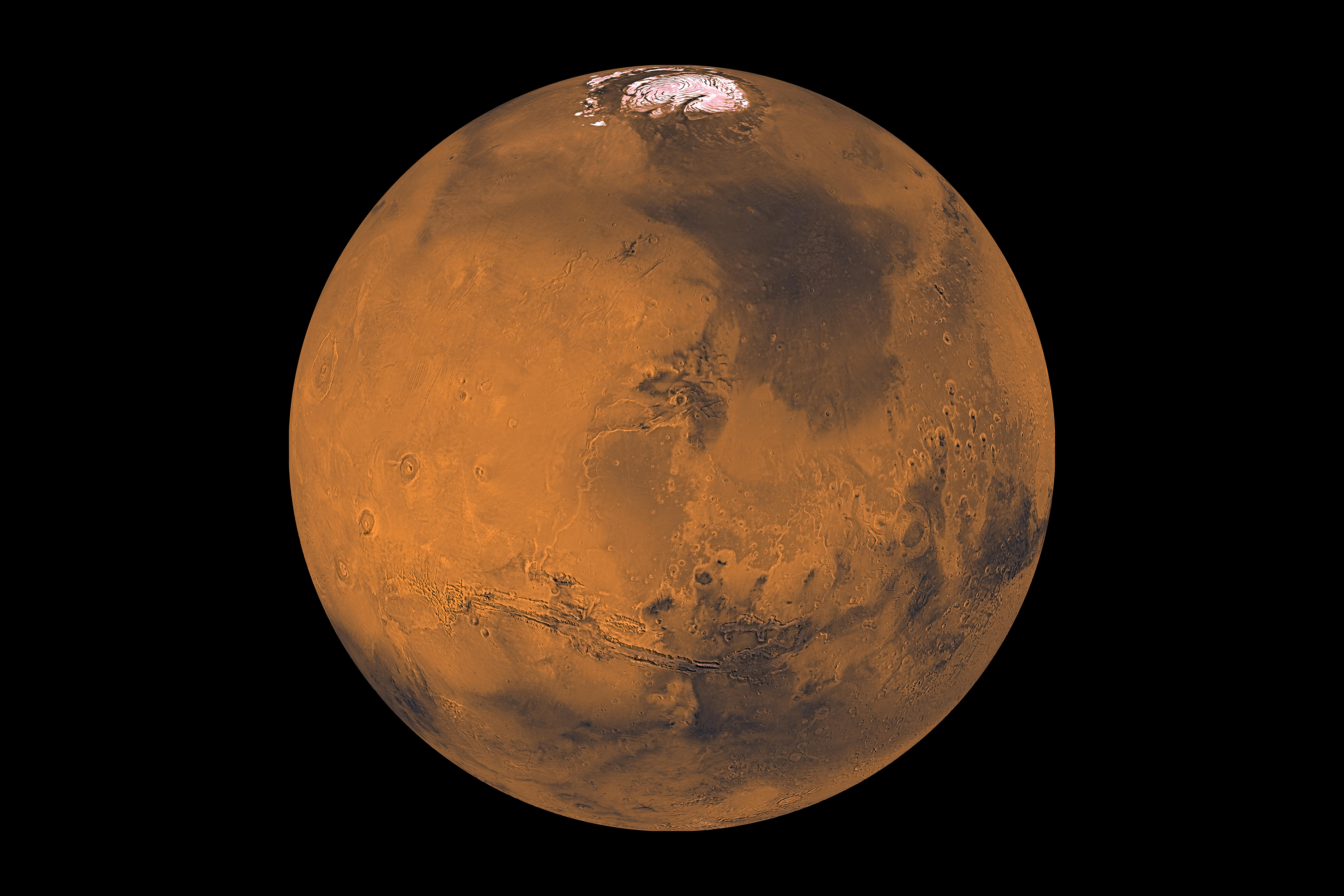
Mars has always been fertile ground for the imagination. Science-fiction stories of centuries past depicted a warm and inviting planet filled with martian civilizations. Astronomer Percival Lowell received widespread attention for his claims to have charted a network of canals. And while improvements in telescopes in the early 20th century prompted most astronomers to abandon hopes of finding advanced life on Mars, through the middle of the 20th century, there was still serious debate whether seasonal changes to the planet’s features were due to continental-scale blooms of plant life.
It wasn’t until the 1960s that such notions were definitively dispelled when spacecraft first ventured to Mars. In 1965, NASA’s Mariner 4 performed a flyby of the Red Planet and returned photographs showing a bone-dry, crater-pocked surface with an atmosphere less than 1 percent the thickness of Earth’s. And in 1971, Mariner 9 became the first craft to settle into orbit around Mars, with two Soviet orbiters close behind.
But these and subsequent robotic explorers did begin to find evidence that water was abundant on Mars’ surface in its ancient past. From orbit, photographs revealed surface channels carved not by martians but by powerful flows of water. And on the surface, rovers have traversed dried-up rivers and lakes, even finding fossilized ripples of a once-sandy lakebed on exposed surface rocks. So, where did all that water go? The short answer is, some of it evaporated into space, and the rest of it became locked in the planet’s polar caps and in its crust — either in the form of subsurface aquifers or perhaps within minerals in the planet’s crust. Unraveling the history of this water and determining how much went where is still one of the most vexing mysteries of the Red Planet.
Follow Astronomy magazine, the world’s best-selling astronomy magazine:
🌎 Website: https://astronomy.com
📖 Subscribe: http://subscribe.astronomy.com
📘 Facebook: https://www.facebook.com/AstronomyMagazine
📸 Instagram: https://instagram.com/astronomy.magazine
🐦 Twitter: https://twitter.com/AstronomyMag
Shop Celestron telescopes:
🔭 Website: https://celestron.com
Follow Dave Eicher:
📘 Facebook: https://www.facebook.com/davidjohneicher
📸 Instagram: https://instagram.com/eicher.david
🐦 Twitter: https://twitter.com/deicherstar









